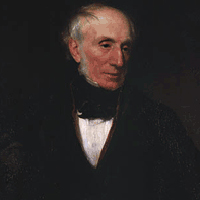I Wandered Lonely as a Cloud (Daffodils) by William Wordsworth: Summary and Critical Analysis
The poem I Wandered Lonely as a Cloud (or 'Daffodils' as some people refer the poem to) by William Wordsworth, written in 1802 and first published in 1807, celebrates the beauty of nature to such an extent that for the poet it is not only a beauty but 'bliss of solitude' too. It is for him a source of inspiration to live his life meaningful. The poem is a romantic poem that is based on the principle that poetry is the spontaneous overflow of powerful feelings recollected in tranquility.

William Wordsworth (1770-1850)
The first three stanzas deal with the description of nature, whereas last stanza is the recollection of the poet’s experiences. Another important romantic element is the spontaneous expression of personal emotion in simple and ordinary language: this was the revolution brought about by the Romantic Movement. Once, the poet was aimlessly walking by the side of the lake.
In his lonely condition, he could be compared to a cloud floating in the sky over hills and valley. By comparing himself with the cloud, he vividly shows his closeness to the nature. All at once he saw a large number of golden daffodils growing under the trees on the bank of the lake. A light breeze was blowing and the daffodils moved gently and danced merrily in the breeze. The daffodils grew along the bank of the lake in a line that extended as far as the poet’s eyes could reach. They looked like a continuous line of stars shining in the Milky Way. The flowers were so many that the poet imagined he could have seen at least ten thousand of them at a glance.
They were tossing their heads in a merry dance. The waves in the lake were dancing too. But the daffodils excelled the dancing waves in happiness. It was quite natural for a poet to feel happy in such a delightful company. The beautiful sight filled him with a great joy, and he kept gazing at the flowers for a long time. At that time he did not, however, realize how valuable this scene would prove to him in the years to come. Later, whenever the poet lay on his couch in a sad or thoughtful mood the daffodils would flash in his imagination. He acknowledges that one of the greatest blessings that solitude can offer is that old memories can be easily and vividly revived. The memory of the daffodils would immediately fill his heart with pleasure and he would begin to dance along with the flowers.
The poet till today’s date has not been able to forget the beautiful experience that he had near the lake with the dancing daffodils. Whenever he lies down for taking a rest, or whenever he is in a vacant or pensive mood, the memory of the daffodils flashes in his mind. And then the poet’s mind starts dancing along with the daffodils as the sheer memory of them is enough to feel his heart with ecstasy. The poem, in this way is not only a description of natural beauty, but also a celebration of the fact that nature is always a source of inspiration for people.
The poet metaphorically compares himself to a natural object, a cloud and the beautiful daffodils are repeatedly personified as human beings, dancing and “tossing their heads” in “a crowd, a host.” This use of metaphor indicates the inseparable relationship between human and nature. This tone of this poem is typically Wordsworthian. It beautifully depicts Nature at its best form and embraces her grace to the apex. The poet is successful at projecting his extraordinary delight in understanding and exploring common place things. The daffodils are common for the people, but his poetic mind and eyes find a bliss in those graceful daffodils.
The poem comprises four stanzas and each stanza has six lines. The rhyme scheme is ababcc and there is the use of alliteration and assonance. The poet has used simile in the title of the poem and in the second stanza. Daffodils are animated as dancing and further personified as ‘sprightly’. Metaphors like inward eye and the heart can be found in the poem. The language is simple in this poem. There are eight syllables in each line and it has iambic tetrameter.
Cite this Page!
Sharma, K.N. "I Wandered Lonely as a Cloud by William Wordsworth: Summary and Critical Analysis." BachelorandMaster, 20 Nov. 2013, bachelorandmaster.com/britishandamericanpoetry/i-wandered-lonely-as-a-cloud.html.
Related Topics
My Heart Leaps up when I Behold
Ode: Intimations of Immortality
A Slumber Did My Spirit Seal (Lucy Poem)
"I Travell'd Among Unknown Men" (Lucy Poem)
She Dwelt Among the Untrodden Ways (Lucy Poem)
Strange Fits of Passion Have I Known (Lucy Poem)
Three Years She Grew in Sun and Shower (Lucy)
Biography of William Wordsworth
 |
bachelorandmaster.com |